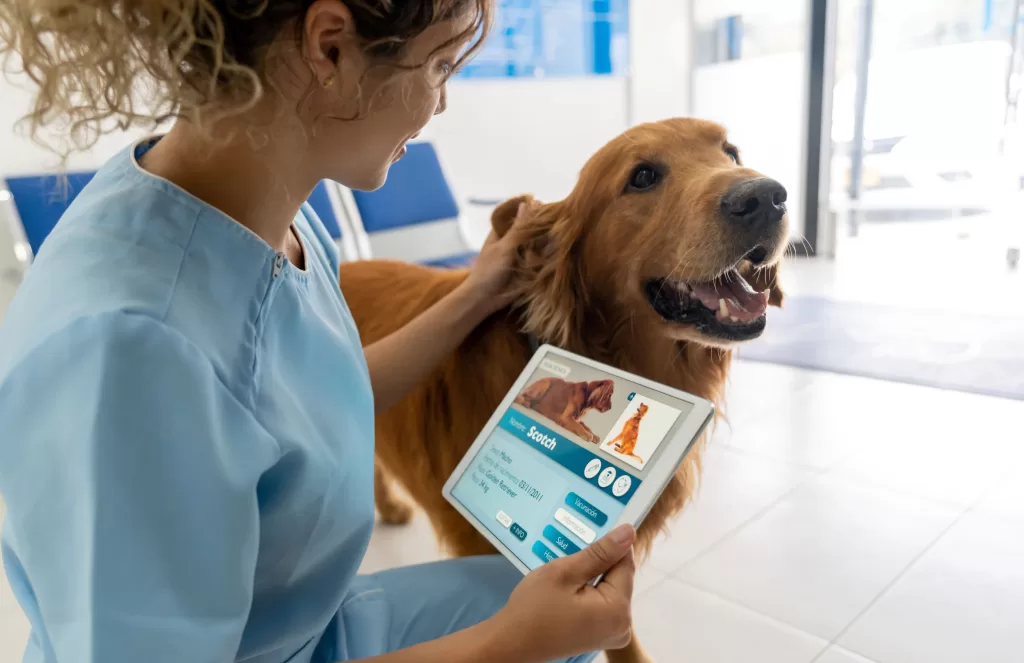Johannesburg, 18 March 2024 – The advancements in artificial intelligence (AI) are rapidly redefining AI’s role as a crucial tool for veterinary experts. However, all new tools and technologies result in change, and change can lead to hesitation and even scepticism. AI does not only have the potential to change animal health diagnostics, but extensive investment into the area means it has already had a significant positive impact in the field.
“With the emergence of popular AI applications like ChatGPT making headlines, it might seem that AI is a novel addition to the tech landscape. However, AI has been integrated into various sectors for a number of years, including veterinary medicine,” says Dr Tarryn Dent, Business Unit Lead: Companion Animals at Zoetis South Africa, a global animal health company. “In fact, many local veterinary clinics are already leveraging AI technologies in multiple ways, resulting in streamlined workflows, better customer service and improved diagnostics that are keeping companion animals fitter and healthier for longer.”
Some common uses for AI technologies include:
Companion diagnostics: Cutting-edge AI diagnostics provide in-depth examination and analysis of microsamples for dermatology, urine, faecal, and blood smear analyses, along with digital cytology image sharing.
Veterinary radiology: AI augments radiologists’ work by offering detailed scans and interpretations.
Drug discovery: AI aids in the development of superior veterinary drugs through the efficient processing of vast datasets and supporting new drug creation and trials.
Client experience enhancements: AI-driven communication tools send appointment reminders, while virtual assistants and chatbots handle inquiries and basic scheduling. AI algorithms also tailor care recommendations.
Marketing and client engagement: AI, including tools like ChatGPT, can generate emails and social media content to engage pet owners.
AI’s learning capabilities are the foundation for accelerated change
“The big difference between AI and other technologies is how AI employs various learning methods to analyse data, undertake tasks, and solve challenges,” says Dent. “These methods can vary in their effectiveness, much like human learning strategies. In veterinary AI, particularly in diagnostics, the type of learning can greatly affect the technology’s precision and safety for patients.”
Two main learning types that we typically see in AI are superficial (or machine learning) and deep learning, a more intricate form of machine learning. Understanding these learning systems can assist veterinarians in choosing the most appropriate technologies, enhancing their familiarity with AI’s capabilities and reliability.
Superficial learning: This type of AI can process data based on a finite set of characteristics, such as cell attributes, relying on human-provided instructions. Enhancing superficial learning algorithms is challenging as it requires humans to continuously identify new features for the AI to learn.
Deep learning: This approach uses an advanced structure of artificial neurons and neural networks to find connections within data. It can identify details at the pixel level, beyond human detection, using thousands of features to recognise specific elements like abnormal cells.
Deep learning algorithms improve with the addition of high-quality, frequent data inputs, allowing them to uncover more features and conduct more thorough analyses.

Leveraging enhanced diagnostics
The development of deep learning tools and a continuous investment into solutions that use this type of AI are resulting in highly sophisticated solutions that support proactive and preventative diagnostics for companion animal health.
For example, Zoetis has invested in Vetscan Imagyst, which leverages deep learning to examine and interpret patient samples comprehensively. With its compact scanner and AI capabilities, coupled with a network of clinical pathologists, this platform offers swift and effective AI-based diagnostics for faecal, dermatology, blood, and urine tests. The deep learning system ensures each sample is analysed through layers of expertly trained neuron inputs for accurate feature identification.
As slides are processed, the Imagyst breaks down images into scenes, further dissecting them into convolutional blocks to identify distinct features, thereby determining the machine’s confidence in identifying specific elements like white blood cells or urine crystals.
With deep learning AI and a broad network of pathologists, the Vetscan Imagyst enables veterinary teams to conduct superior diagnostic tests more efficiently, ensuring timely and precise care for pets.
The benefits of AI for veterinary teams
Understanding how AI works and its practical benefits can help alleviate the initial apprehension surrounding new technology. By adopting AI tools, veterinary professionals can enjoy several advantages:
- Increased efficiency through quicker sample processing and automation of routine tasks, freeing up time for patient and client care.
- Improved accuracy with AI-trained algorithms minimizing human error and enhancing clinical decision-making.
- Higher compliance rates driven by better communication, education, and personalized care recommendations through AI.
- Greater satisfaction among teams and clients due to enhanced productivity, patient outcomes, and the facilitation of stronger veterinary-client relationships, allowing for more personalized care.
“While AI’s role continues to grow, its effectiveness will always depend on the quality of the data used for training,” says Dent. “High-quality inputs, combined with deep learning systems capable of forming new connections and optimising outcomes independently of human intervention, promise to further enrich and improve the veterinary care experience in clinics and beyond. We’re excited to watch how much more veterinarians will be able to do for their patients and practices as this technology becomes commonplace.”





























